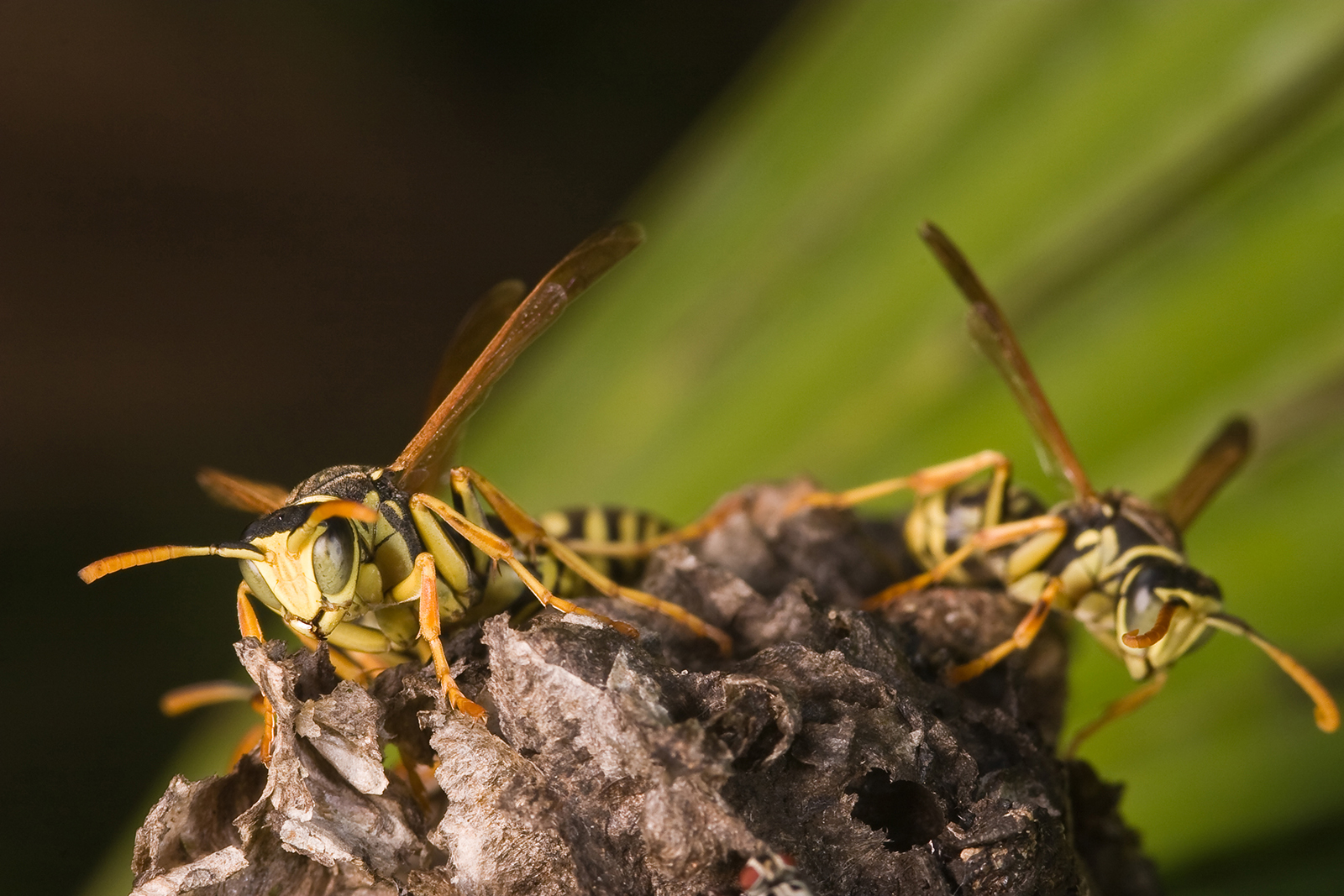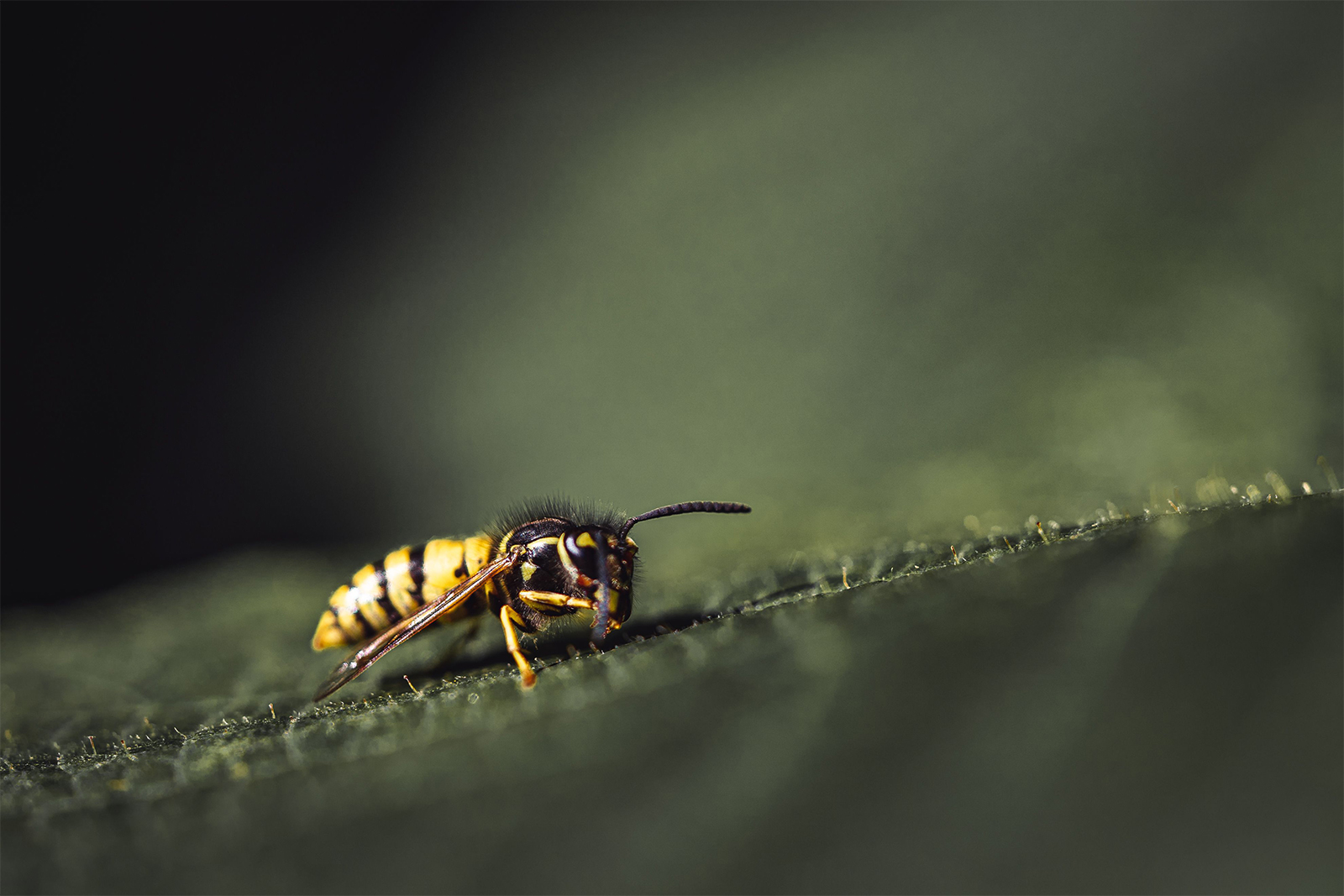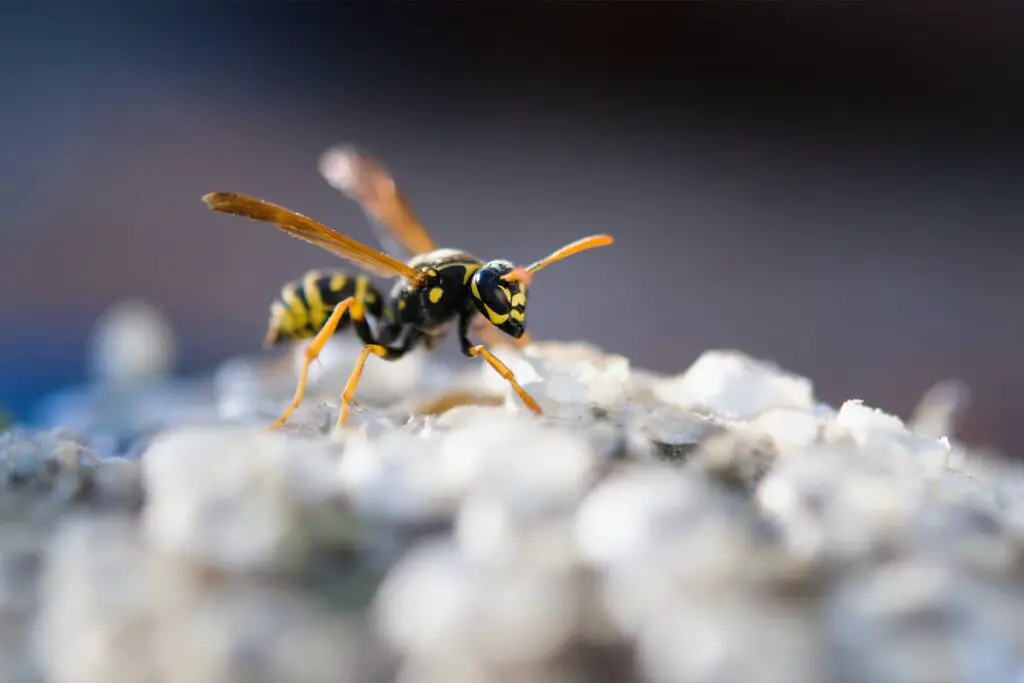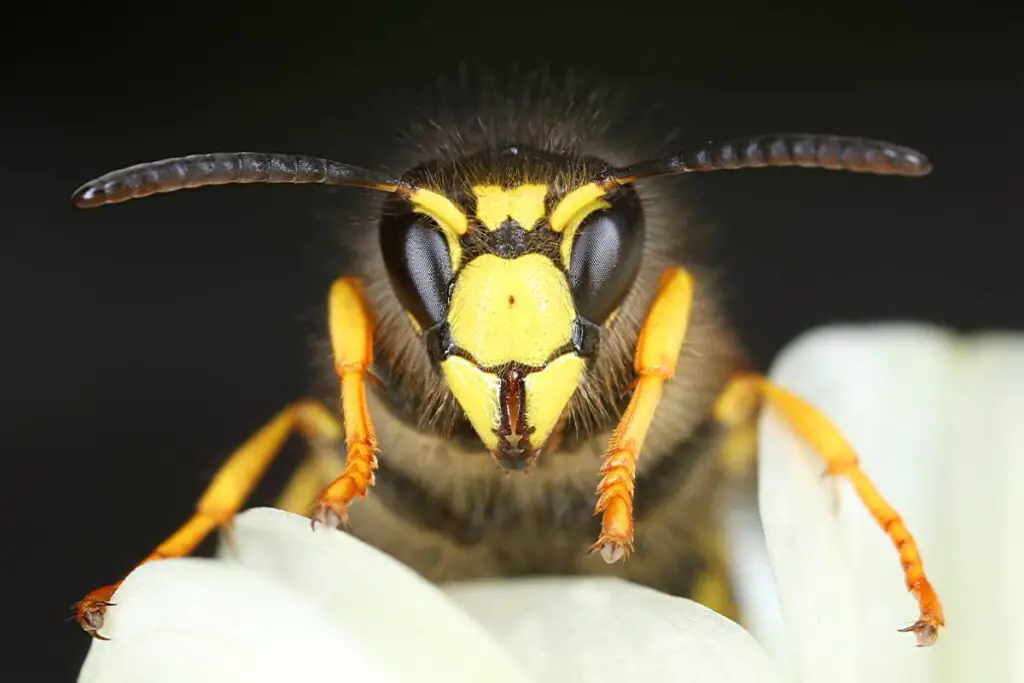
Many people often wonder whether wasps can see at night or if they are nocturnal creatures. Understanding the behavior of wasps and their ability to see in darkness is essential, as it can help people make informed decisions about dealing with these insects, especially when they pose a threat to our homes and outdoor spaces.
Most wasp species have limited vision in the dark and prefer to remain in their nests during the nighttime hours. However, there are a few exceptions, with some nocturnal species having adapted visual organs called ocelli that allow them to see at night.
It is important to note that even though most wasps are inactive at night they can still pose a risk if disturbed, so it’s best to proceed with caution around them.
Wasp Vision Capabilities
Understanding the wasp’s ability to see at night requires taking a closer look at their eye anatomy and color perception. This section will provide insights into these aspects of wasp vision.
Wasp Eye Anatomy
Wasps possess two primary eyes, called compound eyes, and three ocelli. The compound eyes are composed of numerous individual units, called ommatidia, which enable the wasp to detect movement, colors, and patterns. The ocelli are simple eyes located on the top of their heads and are essential in detecting light and maintaining balance during flight.
For most wasp species, their ability to see at night is limited. However, some nocturnal wasps have developed specialized ocelli adaptations that allow them to detect dim light and navigate dark environments more efficiently.
Wasp Color Perception
When it comes to color perception, wasps have a slightly different range than humans. While humans can see colors that range from red to violet, wasps can also see colors in the ultraviolet (UV) spectrum, allowing them to detect colors and patterns invisible to humans. This increased color perception helps them identify suitable flowers for nectar collection and locate prey more efficiently during daylight hours.
However, during nighttime, wasps’ color perception is limited due to the reduction in light levels. The majority of wasps are not well-adapted to seeing colors in low light conditions and become less active at night, returning to their nests.
Wasp Activity During the Night
Nocturnal vs. Diurnal Wasps
Most wasp species are diurnal, meaning they are active during the day and less active at night. These wasps rely primarily on their vision and typically have poor night vision capabilities. They prefer to stay in their nests at night since they cannot see well in the dark.
However, there are a few exceptions, as some wasp species are nocturnal. These nocturnal wasps possess specialized visual organs, called ocelli, which have adaptations that allow them to see at night (The Pet Enthusiast). Nocturnal wasps have better vision in low-light conditions in comparison to their diurnal counterparts.
External Factors Affecting Night Vision
Several external factors can impact a wasp’s ability to see at night, regardless of whether it is a nocturnal or diurnal species. Some of these factors include weather conditions, habitat, and light pollution. For example, cloudy or overcast skies reduce the already limited light available at night, making it even more difficult for wasps to see in low-light environments.
In habitats with a high level of ambient light, such as urban areas with streetlights or other sources of artificial light, wasps’ night vision may be enhanced to some extent. However, it is important to note that even in these brighter environments, diurnal wasps still have comparatively limited vision capabilities at night.

Effects of Limited Night Vision on Wasps
Wasps have limited visibility at night, which affects their behavior and interactions with other creatures. In this section, we will explore the impact of this limited night vision on their foraging behavior and predator-prey interactions.
Pest Samurai has a great breakdown as to how these insects respond to stimuli at night, and how to approach them safely.
Impact on Foraging Behavior
Most wasp species are not well-adapted to navigate in the dark, which means they prefer to remain in their nests at night. Their compound eyes are designed to work best in bright light, which limits their ability to see in lower light conditions (Insect Cop). Even for the few nocturnal species of bees and wasps, their vision remains ineffective in complete darkness and relies on dim light to navigate during nighttime hours (Pubmed).
Due to their poor night vision, wasps are less likely to leave their nests to forage at night. In fact, their daytime foraging behavior is greatly influenced by light intensity, as they require sufficient brightness to locate food sources and navigate their environment effectively (Journals of Experimental Biology).
Predator and Prey Interactions
Wasps’ limited night vision also affects their interactions with predators and prey. Because they are unable to effectively navigate and locate food sources at night, wasps become more vulnerable to predation during these hours. Conversely, wasps are less likely to act as effective predators themselves, as they struggle to locate and capture prey in low-light conditions.
This vulnerability can lead to an altered nocturnal behavior for both wasps and their potential predators, which might develop unique strategies to take advantage of the wasps’ limited night vision. In turn, wasps need to adopt defensive behaviors when faced with nocturnal dangers, such as staying close to their nests or adopting a more inconspicuous position to avoid attracting unwanted attention.
Tips for Managing Wasp Encounters
Minimizing Wasp Attraction
Wasps are primarily attracted to certain scents, food, and light. To minimize attracting wasps, follow these suggestions:
- Remove any sources of food, such as open garbage bins or pet food, from outdoor areas.
- Avoid wearing sweet-smelling perfumes and lotions when spending time outside.
- Keep outdoor eating areas clean and free of food debris.
- Minimize the use of bright lights at night, as wasps are inherently attracted to light.
Safety Precautions
Taking precautionary measures can help reduce the risk of wasp stings and potential disturbances to wasps’ nests. Here are some safety precautions to consider:
- Wear protective clothing, such as long sleeves and pants, when working in areas where wasps may be present.
- Exercise caution when approaching areas where wasp nests are known to exist.
- Be mindful of sudden movements or loud noises near wasp nests, as this can provoke them.
- If a wasp nest is discovered on your property, contact a professional pest control company to safely deal with the situation.
- Do not attempt to remove wasp nests yourself, as this can lead to a potentially dangerous situation. Wasps may attack if their nest is disturbed or threatened.
Conclusion
While most wasps are not active at night, some species do exhibit nocturnal behavior, thanks to adaptations that allow them to see in low-light conditions, such as specialized ocelli. However, it’s important to note that wasp activity usually decreases with cooler temperatures, and they are less likely to fly if the temperature is below 50 degrees (School of Bees).
Comparatively, certain hornet species can fly at night without any obvious physical adaptations for night vision (Kelber et al., 2011). These nocturnal capabilities suggest that wasps and hornets may have developed different techniques for navigating in low-light environments.
The ability of wasps to see at night depends on factors such as species, temperature, and adaptations. Therefore, understanding the specific characteristics of the wasp species in question is essential for determining their level of visibility and activity during nighttime hours.
Driven by a passion for those tiny creatures that rule our world, we at Bug Domain strive to be your go-to resource for information on insects.



